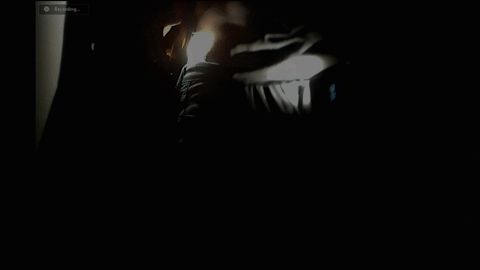#placelessness
space(s) is another encounter between Lisa Parra ( @parralis ) and Daniel Pinheiro ( @daniel-pinheiro ) exploring the possibilities of the networked environment.
Space is a practiced place. Thus the street geometrically defined by urban planning is transformed into a space by walkers. In the same way, an act of reading is a space produced by the practice of a particular place: a written text, i.e.: a place constituted by a system of signs. - Michel De Certeau
(De Certeau, ‘The Practice of Everyday Life’, 117, quoted in Kaye, 'Site-Specific Art: Performance, Place and Documentation, 4; quoted in Steve Dixon’s 'Digital Performance - A History of New Media in Theater, Dance, Performance Art, and Installation’, 411)

In the darkness,
We move forward,
in an unknown territory,
a territory devoid of references,
without meaning.
As we move ahead,
as we go through the surface,
through the edges,
as we follow the contours,
we intersect shapes and elements.
In that space,
it becomes…
impossible to perceive what we intersect.
We resort to memory,
to reproduce what we think
we are in fact intersecting.
We resort to memory,
of things we already know,
so we can name the things,
and make that space,
somehow recognizable.
In that space,
where distance is impossible to measure,
we try…
that opacity becomes lesser…
where are you when you’re not here?!
-Placelessness, 2015; LAND PROJECT

As the place - space - is built by a relationship of coexistence; remote places become a single distributed continuous area expanded through a networked system of communication - the specificity of this place [site-specific] is a consequence of what happens within it. The personal sense of position, in regard to common referentials, is disrupted by fracturing the distance between (at least) two physical locations. This perception is an altered state caused by a sensorial experience of practicing this new multi-location extended placelessness inhabited by actions that, through light, gradually unveil a unified mixed reality.
By playing with the possibility offered by darkness and with light, the doubled space is demarcated by the actions developed, its liminality allows for a careful disorientation of participants inviting them to ‘enter’ each other’s distinct location and compose a representation of what’s being simultaneously constructed.
The body finds itself in the middle of this ambiguity, no longer claiming a singular identity but possibly assuming the other as an extension of its own. These ambiguous bodies are constantly in a state of becoming, a transdividual exchange that is a writing of this space, only tangible through its embodiment – its practice, constituting an archetypal system.

Through the screen, both the sense of presence (body) and space (place), within networked environments are exerted to the extent that they undermine traditional preconceptions of their significance. This non-place is a constant transitory state between the physical and the immateriality of its augmentation; inhabited by its agents/actors it becomes a site-specific where both the perception of location and self are shared between them, a communicant place where one end is not a copy of the other, where both are real and coexist in the same time – this one limited to the length of its duration – an area of action, liberated from normative constraints.

see time lapse video of the encounter here.
“what does it mean being human in the future?” “how to be seen?” “the in between as a potential for connection…” the constant transformation caused by a state of permanent transition was present in Eli Steffen’s questions for his curation of Gray Spaces @ the Wild Project, as part of the Contemporary Performance Network Festival, Special Effects.
While addressing some of these questions in our work, this version of LAND PROJECT / Placelessness (first developed in residence in October, 2015) took on the following premise: negotiating movement within the in-betweeness of the digital space, as a response to one of the themes of Gray Spaces - the uncharted topographies of performance.
Where are you when you’re not here?! Where is here…?
Land Project, performed by Lisa Parra and Daniel Pinheiro, gave us some video-mirroring between Lisa in the lobby and Daniel on a live feed from an undisclosed location, presumably backstage. Physical movement was benign, but there was an eerie ISIS quality to Daniel’s placeless dark room. The physical became vocal as characters spoke in different languages, struggling to communicate and comprehend. “Are you here now? Where is here?”
LAND PROJECT: Placelessness
Lisa Parra & Daniel Pinheiro
with: Hannah Bastos & António Matos
collaboration with: Annie Abrahams & Mateo Galindo Torres
October, 2015 CAAA - Centre for Art and Architecture Affairs, in Guimarães (Portugal)
In the darkness,
We move forward,
in an unknown territory,
a territory devoid of references,
without meaning.
As we move ahead,
as we go through the surface,
through the edges,
as we follow the contours,
we intersect shapes and elements.
In that space,
it becomes…
impossible to perceive what we intersect.
We resort to memory,
to reproduce what we think
we are in fact intersecting.
We resort to memory,
of things we already know,
so we can name the things,
and make that space,
somehow recognizable.
In that space,
where distance is impossible to measure,
we try…
that opacity becomes lesser…
where are you when you’re not here?!
